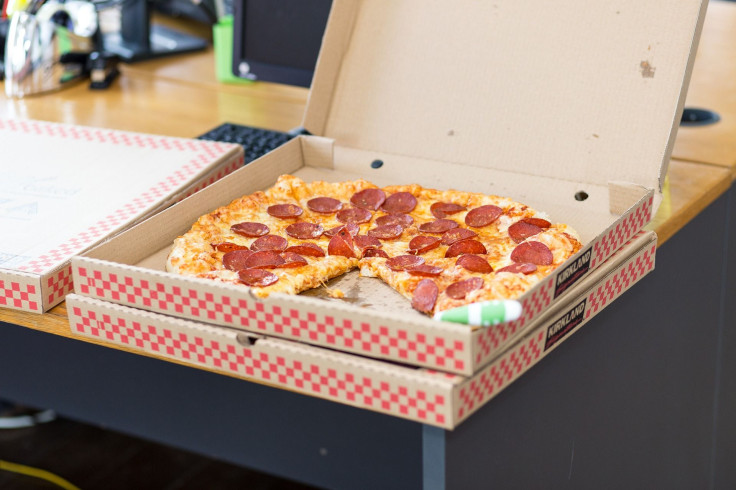National Pepperoni Pizza Day: Here's How Unhealthy Your Favorite Slice Is
KEY POINTS
- National Pepperoni Pizza Day is celebrated annually on September 20
- Pizza may have negative health effects, increasing the risk of several diseases
- It's important to eat pizza in moderation
Pizza lovers, rejoice! It's September 20, and that means everyone around the world will be celebrating National Pepperoni Pizza Day.
Pepperoni dominates the list of the most popular pizza toppings. According to a research by a business analyst, close to 40% of people order their pizza with pepperoni. No wonder there's a day to honor its contribution to society as one of the best comfort food toppings of all time.
It's widely accepted that pizza is delicious. Munching a slice once or twice a month means no harm. But for those who eat more than a slice a day may face health consequences.
This all-time favorite comfort food is considered junk food by some health experts. And like other junk foods, pizza could be considered a culprit to many health issues, including obesity, high cholesterol and blood sugar increase.
A slice of pepperoni pizza is packed with around 300 to 400 calories, depending on whether it's a thick or thin slice. It also contains an average of 14 grams of fat and a whopping 700 mg of sodium.
While everyone's celebrating National Pepperoni Pizza Day, here are five reasons why a few slices of pizza is not the best for your health:
1. It's a Processed Food
Most pizzas these days are made from processed ingredients, especially in fast food chains and the frozen aisle. These contain unhealthy ingredients that include a saturation of fat, sugar and sodium to make it taste better. Plus, many use preservatives on their pizzas to extend the shelf life.
2. It's Made From Refined Flour
The pizza crust is usually made from refined flour. The flour, in general, is made from grains wherein its bran and germs are removed. Unfortunately, this process also removes the essential vitamins, minerals and fiber in the flour, making it a plain carbohydrate with less nutrition.
Eating more than a slice of pizza per day results in visceral abdominal fat. It doesn't just result in simple love handles, it may also help increase the risk of developing type 2 diabetes and other cardiovascular diseases, SF Gate noted.
3. It May Cause Blood Sugar Level Fluctuations
Since the pizza crust is loaded with carbohydrates, eating pizza daily may disrupt the natural sugar balance in your body. It may cause spikes in sugar levels and a crash down after eating. This effect is very similar to consuming a lot of sugar that causes fluctuations, or a "sugar rush" -- a surge of energy that eventually results to complete exhaustion and sluggishness.
4. Pizza Can Increase Blood Pressure
The high sodium levels in pizza may cause hypertension. The Food and Drug Administration (FDA) recommends 2,300 mg of sodium per day for adults in its Dietary Guidelines For Americans. However, most people don't settle for a single slice of pizza, which on average has 700 grams of sodium.
Plus, people won't just eat pizza alone. Instead, they pair it with other food items such as soda or meat which are packed with more calories and sodium.
By doing simple math, you might have consumed more than the FDA's recommended sodium intake. Regular high sodium intake may cause hypertension. So think twice before having a whole box of pizza to yourself.
5. Pizza is Addicting
Pizza contains ingredients that are simply irresistible. However, highly processed food (i.e. refined sugar, fats) stimulate the so-called "Feel Good Hormones," or the dopamine receptors in the brain. It is the hormone that is activated in the reward and pleasure region of the brain.
It may help people having a bad day feel better, but it may result in "food addiction" in the long run.

© Copyright IBTimes 2024. All rights reserved.





















